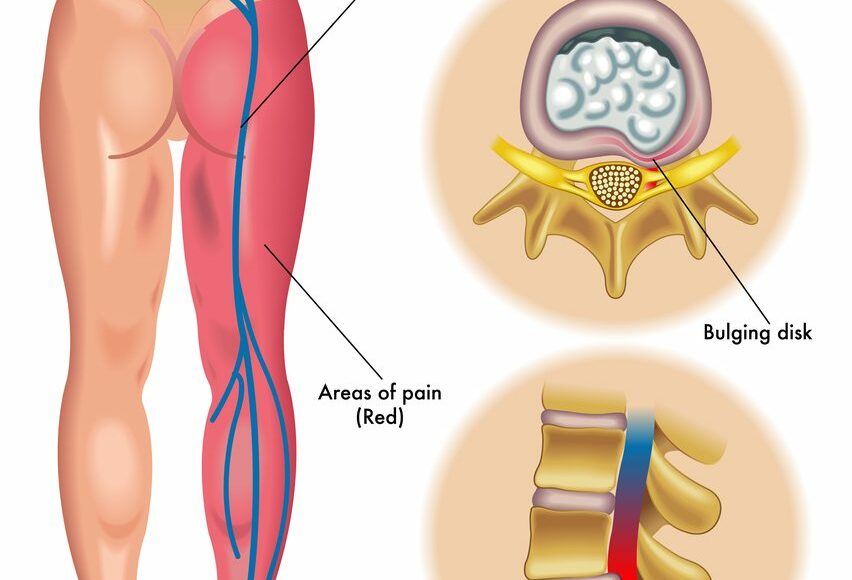Sciatica is the word used to express the sensations of pain, tingling, numbness, and or weakness felt in the leg that originates from the lower back and transitions through the buttock and down the back of the leg via the sciatic nerve.
Sciatica is an underlying issue within your lower back. Sciatica symptoms occur with low back issues such as spinal stenosis, spondylolisthesis, lumbar herniated disc, or degenerative disc disorders.
Anything that compresses or affects the sciatic nerve creates the pain and symptoms associated with the term.
Sciatic Nerve Pain Characterized
These are the most common symptoms reported by those who suffer from sciatica.
- Nonstop pain one only one side of the hip/buttock or leg – It’s rare to manifest on both sides
- A sharp pain makes it burdensome to stand up or walk
- Pain that emanates down the leg and potentially the foot and toes – It’s rare to occur in only one foot
- Pain that worsens upon sitting
- Burning, searing, or tingling pain down the leg – Not a dull pain
- Numbness or weakness that makes it difficult to move your leg, foot, or toes
Pain caused by something happening with the sciatic nerve can range from occasional to perpetual to immobilizing. The pain or sensations are commonly based on the location of the affected pinched nerve.
It is uncommon for sciatica to cause permanent nerve damage, regardless of how painful or debilitating the problem is. However, spinal cord issues may occur in rare cases.
The Course Sciatic Pain Takes
It is rare for a person to experience sciatic nerve pain before the age of 20, but it can happen. It becomes more prevalent between the ages of 40 and 50.
Back injuries or trauma aren’t the cause of sciatica. It seems to develop over a period of time.
Most people find quick relief within a few days or weeks with no treatment other than pain medication or chiropractic adjustment. Surgery is seldom a treatment for sciatica unless the leg pain is severe and disabling.
Medical care is advised for this nerve pain to monitor it and ensure it isn’t a symptom of a major illness.

When Sciatica Gets Serious
A few sciatica symptoms occur rarely, but require urgent medical care, and potentially surgery.
Progressive neurological issues such as bladder or bowel dysfunction or leg weakness are signs of something beyond sciatic nerve pain and could be a symptom of something like spinal tumours or infections.
Treating sciatica involves finding the underlying cause of the problem and treating that to reduce pain and to prevent its recurrence. Self-care and nonsurgical treatments are the most common methods used for treating sciatica.
Rarely, persistent and treatment-resistant sciatic nerve pain that causes bodily dysfunctions may require surgical intervention.
Final Thoughts
If you suffer from pain or numbness, weakness, or burning sensations radiating from your hip/buttocks and down the back of your leg, it’s recommended that you see your doctor.
It’s crucial that you find out what is causing it and rule out anything serious, even though most cases require nothing more than bed rest, pain medications, or other self-care measures.
Anne Keiley
Latest posts by Anne Keiley (see all)
- 9 Best Inversion Tables for Back Pain (2022 Reviews) - April 19, 2024
- 10 Best Massage Chairs for Back Pain (2024 Reviews) - April 19, 2024
- 8 Best Ergonomic Footrests for Home & Office (2024) - April 17, 2024






I am suffering for the desise.Help me